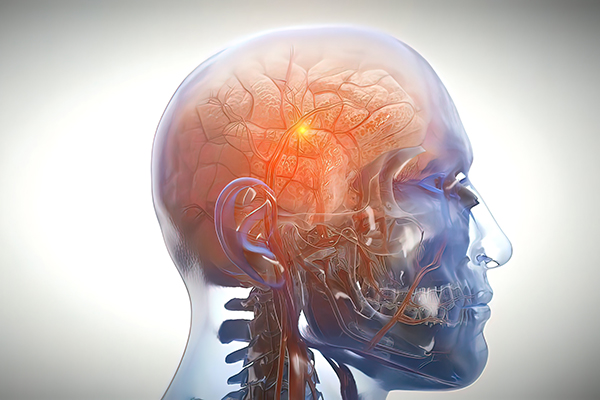An Emory University study published in Aging shows brain lesions, known as white matter hyperintensities (WMH), are associated with premature brain aging.
Emory University School of Medicine professor of neurology Leonardo Bonilha, MD, PhD, and research specialist Rebecca Roth joined researchers from the University of South Carolina (USC) and the Medical University of South Carolina to test the hypothesis that WMH are independently associated with premature brain age in an original aging cohort.
Brain age, a strong marker of cognitive abilities, is an MRI-derived estimate of brain tissue loss that has a similar pattern to aging-related atrophy. WMHs are neuroimaging markers of small vessel disease detected by MRI and may represent subtle signs of brain compromise.
“Our findings support previous research suggesting there is a relationship between chronological age and the volume of white matter hyperintensities and chronological age and estimated brain age,” says Bonilha, a neurologist at the Emory Brain Health Center.
“This is important because brain age is a neurobiological measure that is dissociated from chronological age for many individuals. By better understanding the factors that contribute to aging changes in the brain tissue, there is a direct opportunity to change and prevent premature brain aging,” says Bonilha.
Brain age was calculated in 166 healthy adult participants from the Aging Brain study led by Julius Fridriksson, PhD, at USC. Brain age was measured using machine-learning on whole-brain tissue estimates from images using the BrainAgeR analysis pipeline. A positive difference between estimated brain age and chronological age (BrainGAP) was used as a measure of premature brain aging. Then, partial Pearson correlations between BrainGAP and volume of WMHs were calculated (accounting for chronological age).
The study revealed higher volumes of WMHs were associated with premature brain aging. Even when accounting for the brain aging expected to occur with a person’s advancing chronological age, the presence of WMHs increased the number of years of premature brain aging. More specifically, each additional year in brain age beyond chronological age corresponded to an additional 1.1mm3 in WMH load.
According to Bonilha, continued research is needed to determine other factors that can accentuate or protect against brain aging, such as social activities or continued cognitive engagement. More research in this area is also needed to better understand how brain aging occurs after strokes and affects resiliency to brain injury.
Bonilha and his research team will continue their work in this area to better leverage these discoveries to improve brain health of individuals with and without neurological diseases.
Learn more about the Aging study here.
###
About Brain Health at Emory University
As one of the nation’s premier research universities, Emory University is a leader in education, discovery and patient care related to the neurosciences. Faculty scholars, scientists, physicians and clinicians throughout the university collaborate on advancing knowledge associated with the brain and brain health. The Emory Brain Health Center combines neurology, neurosurgery, psychiatry and behavioral sciences, rehabilitation medicine and sleep medicine in a unique, integrated approach. Emory researchers are predicting, preventing, treating and curing diseases and disorders of the brain and addressing the growing global crisis associated with some of the most common ones. In addition, Emory’s neuroethics program explores the evolving ethical, legal and social impact of the neurosciences. Emory’s multidisciplinary approach is transforming the world’s understanding of the vast frontiers of the brain, harnessing imagination and discovery to address 21st-century challenges.

